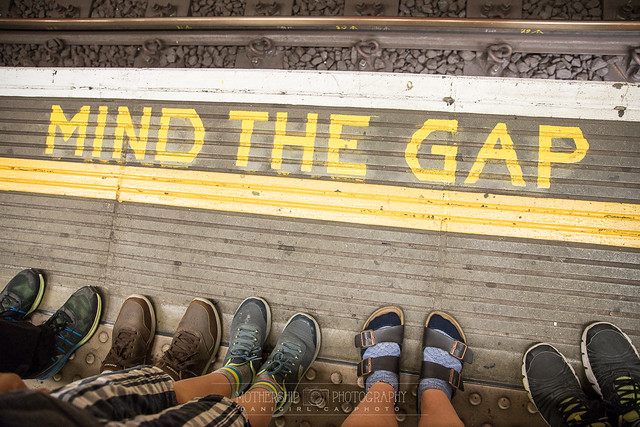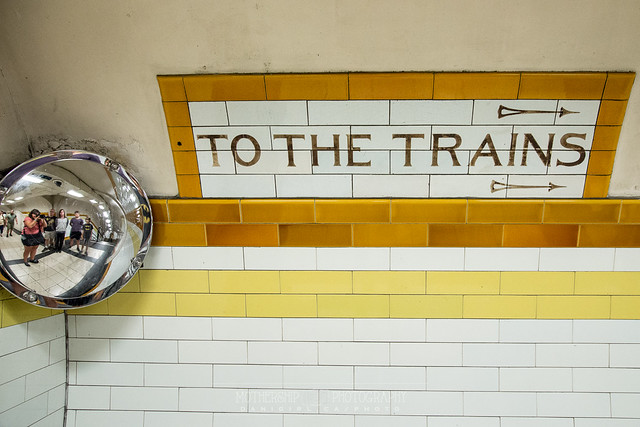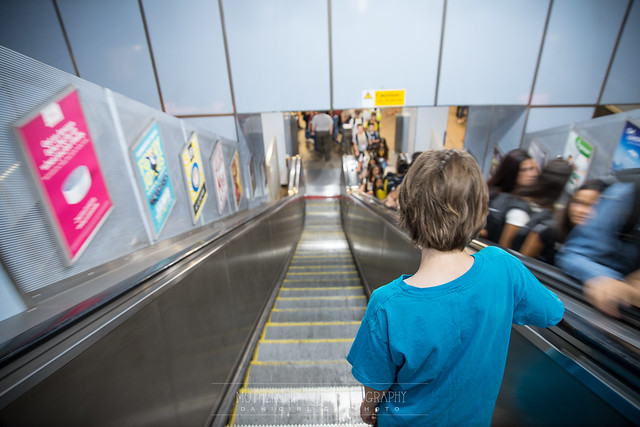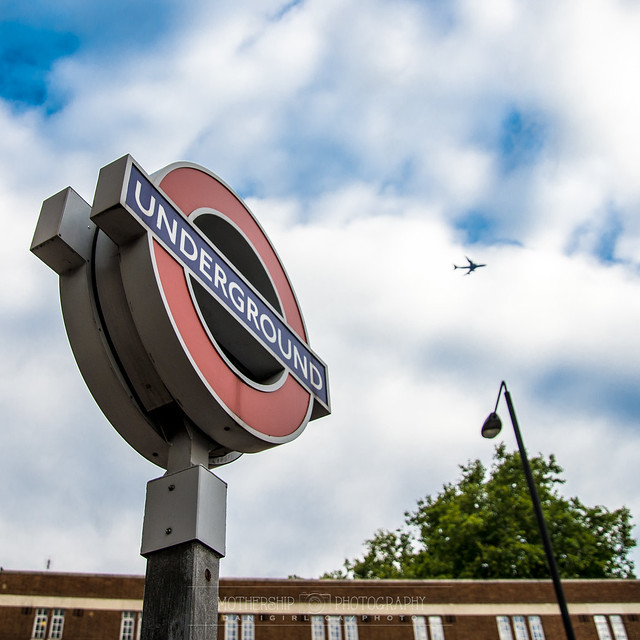I would not have expected that navigating through London’s (in)famous Underground would be as significant a touchstone in our travel memories as were our trips to the Harry Potter studio, the Royal Observatory at Greenwich and the Tower Bridge. It was certainly something we were anticipating with interest, partly because Tristan, Simon and I read Neil Gaiman’s Neverwhere a few years ago, and many of the stations and places played a part in that story, and partly because the Underground is sort of mythic in pop culture in its own right. Certainly, it was both more interesting and less challenging than I had fretted in the planning portion of our adventure.
The Oyster card, London’s smartcard system for paying fares for travel in the Tube, bus, light rail and some river boats, seemed fairly straightforward, but I still remain unclear on whether or when one should opt for a special travel card or a visitor Oyster card. I also could see that Simon would be able eligible for half-priced fares (ages 11 to 15), that at 16 Tristan would pay adult fares, and Lucas would generally travel free accompanied by a paying adult. There were myriad options for kids, though: youth Zip cards and travel cards and young visitor discounts and visitor passes; no matter how much I read, I could never quite parse the differences and benefits between them.
In the end, we just used the regular pay as you go Oyster cards. I’d been told it was easy to both acquire the cards (you can get them from ATM-style machines in each Tube station) and to find a Transport for London (TfL) employee to activate a special youth discount on Simon’s card. It was even easier than I expected – there were minimal lines at the machines at the Heathrow station, and there are universally helpful and patient TfL folks at every Tube station to help you figure out how to purchase, reload, or add a youth visitor discount to your card. In fact, if a certain youth manages to lose his newly acquired and pre-loaded with travel money Oyster card on the voyage between the airport and arriving at your flat in your first 90 minutes in London, the station attendant will good-naturedly chide said child as “quite naughty” and give you special sleeves for all of your family cards so that no more of them go astray.
Soon, we were all pros at tapping in and out as we moved through various Underground stations. Lucas, who at age 10 travels for free with an adult, learned to look for the wider accessible gate with paddles rather than turnstiles at each barrier so we could move through together. I even showed the boys to watch for the quick flash of remaining balance on the Oyster cards as they tapped out.
While I was a bus commuter for years in Ottawa, and while I’ve occasionally used subways in Toronto and Montreal and even Paris before, this was my first experience with extensive use of a subway system. I have a couple of observations. First, it is generally a stunningly effective system. I can see how it would be utter chaos when the system breaks down, but once you get the gist of it, the Underground is a safe, easy and efficient way to zoom around the core. We enjoyed the Tube even better when we learned to avoid the crush of rush hour congestion we accidentally got caught up in a few days in a row, before we learned to travel in off-peak hours. Second, I was surprised at how far one has to follow labyrinth tunnels up and down and over and up and down and over again to make a connection in what is purportedly the same station but occasionally feels like it’s in a different time zone. Third, London in general is not equipped for heat waves of the sort that gripped the city in July of 2018, and nowhere is this more evident than in the un-air-conditioned Underground. Several times we opted for walks of 30+ minutes on sore and tired feet rather than dealing with sweaty, crowded Tube rides of half that duration. Fourth, one does not mess with the rule that the right side of the escalator is for standing and the left is for moving.
The fifth and final observation needs a paragraph of its own. The Transport for London trip planner is a great tool, with some caveats. Rather than downloading the app, I simply bookmarked the trip planner on the home screen on my phone, and used it constantly. Annoyingly, it clears your journey when your phone goes to sleep or you open a different app, so I got in the habit of screenshotting our planned routes – I realized only after deleting several days’ worth of them that those screen shots alone would have made a fun souvenir collage! And the trip planner defaults to the fastest journey, not necessarily the most convenient or even sensible, resulting in some suggested journeys that comprised a mash-up of Tube and bus options that were optimized by customizing the results to include only Tube options. In short, if you’re going to London for the first time and planning to use the trip planner (which I highly recommend) I also highly recommend that you play with the trip planner for a few days ahead of time so you get used to the options and quirks, I mean, features.
Since we live on the rural outskirts of the city, the boys have not had a lot of exposure to public transit. And by “a lot” I mean pretty much any at all. By the time I was a teen, living in the smaller namesake London in Ontario, I was able to navigate from one end of the city to the other using transit, and I’ve often thought that one of these days I’m going to have to invest a day showing the boys the peccadilloes of OCTranspo. After seeing how quickly they learned to read the station placards to differentiate between east and westbound lines, following directional signs through endless tunnels and even coming to rely on their quick eyes to navigate busy stations, I have every confidence that they’ll be able to master the relatively simple Ottawa transit system.
Using your debit card to top up the cards on the go is as easy as could be. We spent about £45 per adult for a week of travel, including extra for overground tickets to Hampton Court Palace, Watford Junction (Harry Potter studios) and a ride on the Thames Clipper commuter ferry. Here’s another tip for you. You’ll have to pay a £5 deposit when you purchase your Oyster cards from the automated machines at the station, but you get the deposit back and any unused funds up to a certain threshold (I think it’s £10) from the same machine – just look for one that says refunds are available. Just when I thought I was so clever, having spent the last of our British coins on snacks at St Pancras station waiting for the Eurostar, I found myself with nearly £50 more in coins after cashing out our Oyster card deposits and unused fares. More snacks, boys – a LOT of snacks, and quick before the train to Paris comes!





We were just in London. Did you notice that you can now tap a credit card to take the tube or the buses? A Canadian living in London assured me it was the same fare and the credit card usually gives a good exchange rate. You need one credit card per rider and of course, you still need an Oyster Card for those eligible for discounted fares. Avoids the hassle of getting money back at the end of the trip or trying to guess how many rides you will take.